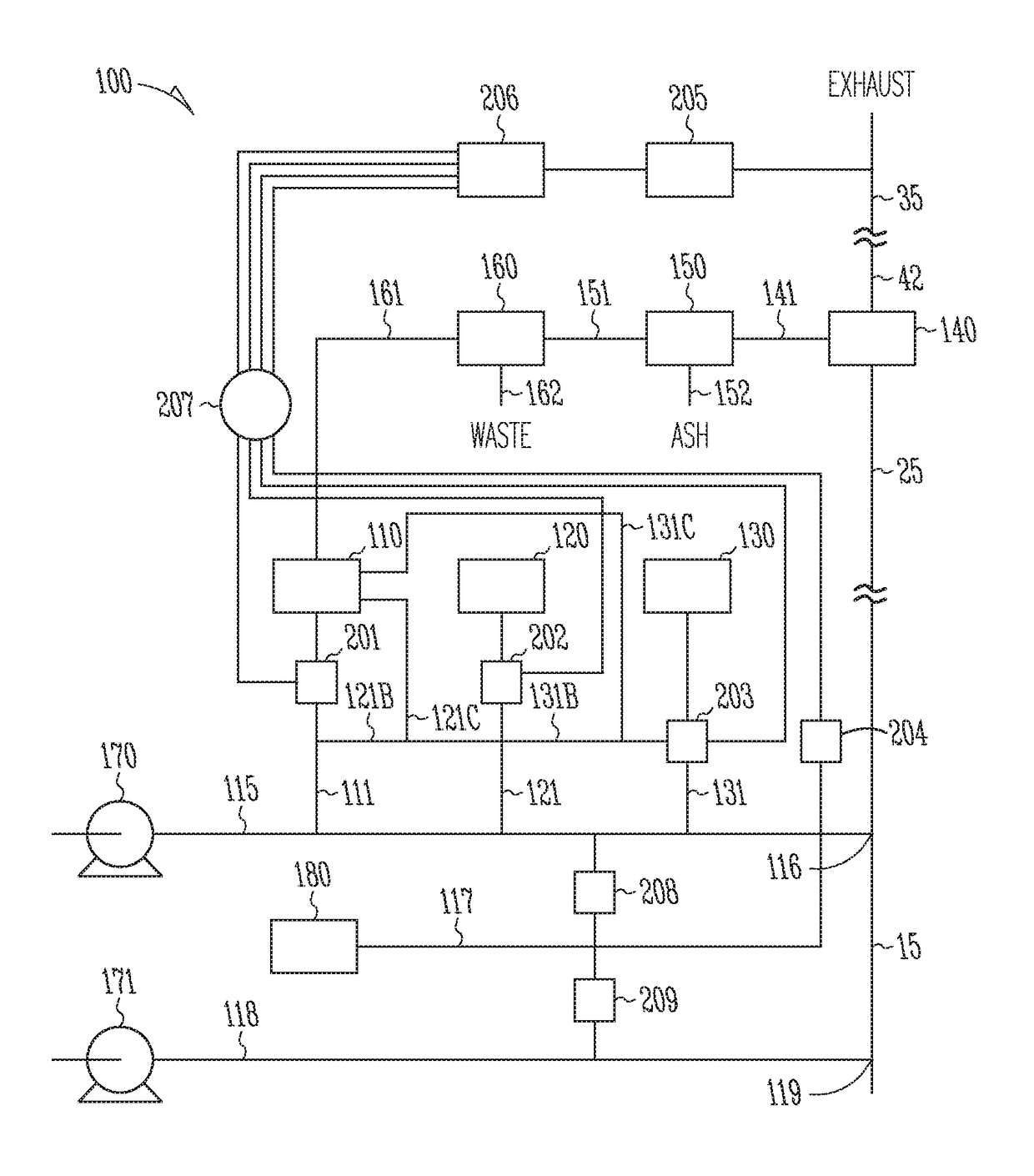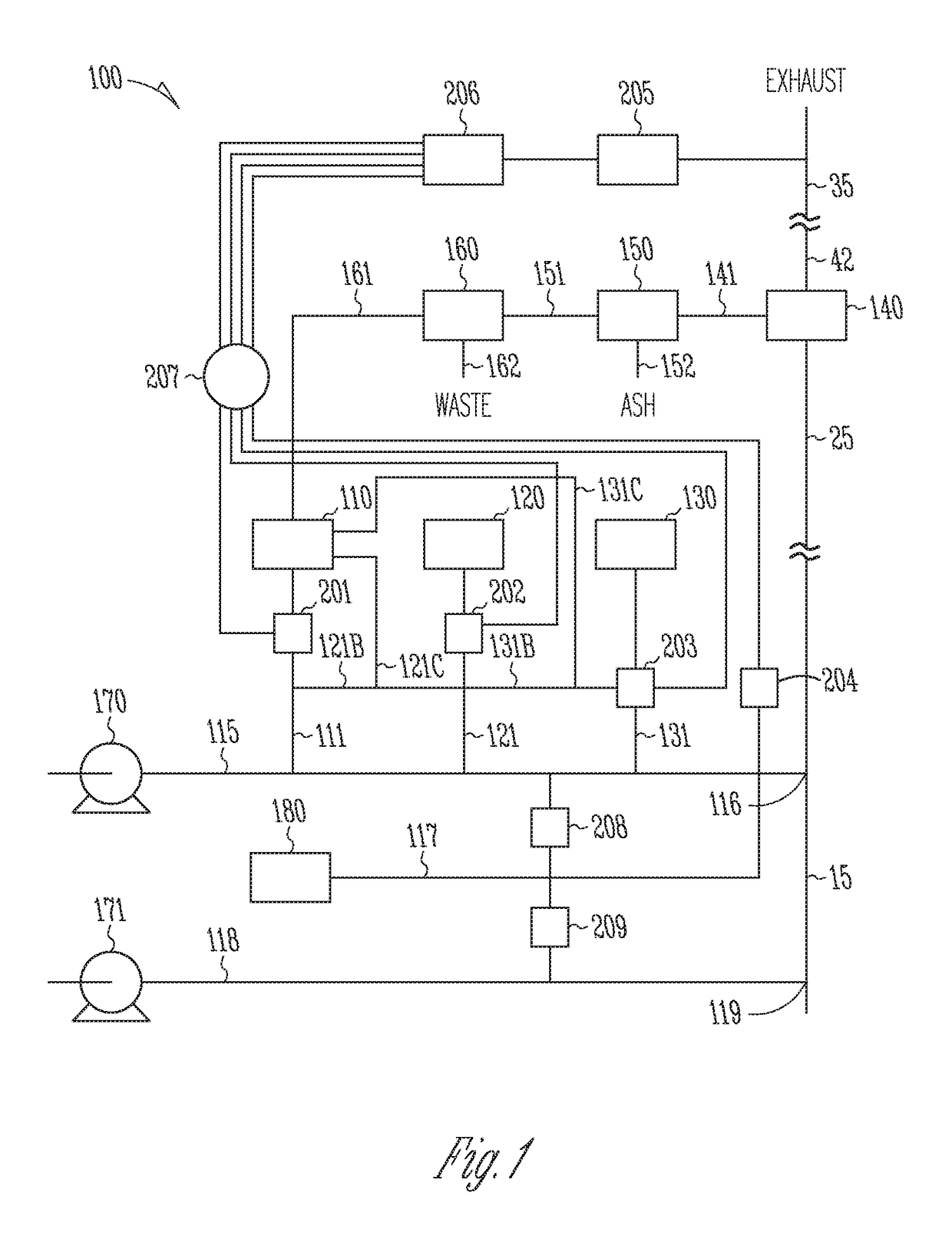Sorbents for the oxidation and removal of mercury
a sorbent and mercury technology, applied in the field of sorbents for the oxidation and removal of mercury, can solve the problems of not using a complexing method on the surface of the sorbent for conducting oxidation and capture, the contact time of the carbon with the gas is very short, and the process is not effective in reducing so as to reduce the disposal of spent sorbents, reduce the cost of mercury removal, and reduce the effect of equipment costs
- Summary
- Abstract
- Description
- Claims
- Application Information
AI Technical Summary
Benefits of technology
Problems solved by technology
Method used
Image
Examples
examples
[0099]Various embodiments of the present invention can be better understood by reference to the following Examples which are offered by way of illustration. The present invention is not limited to the Examples given herein.
Part I. Bench-Scale Testing of Halide-Promoted Sorbents
example i-1
and Bench-Scale Testing of Hydrogen Iodide-Promoted Sorbent
[0100]A sample (5 g) of finely powdered activated carbon (such as NORIT Darco FGD. NORIT Americas. Inc., Marshall, Tex. (USA), although others are suitable, as will be recognized by those skilled in the art), was placed in a beaker and 20 mL of a 0.1 N aqueous solution of hydrogen iodide (HI) was added and stirred with the carbon. The resulting paste was dried in an oven in air at 110° C. The residual moisture was not determined, but was estimated to be similar to that in the starting carbon. Thus, the HI loading was approximately 5 wt %.
[0101]A bench-scale apparatus and procedure was used to test the initial activities and capacities of promoted activated carbon sorbents in a powdered form. A detailed description of the apparatus and its operation is provided in Dunham, G. E.; Miller, S. J. Chang, R.; Bergman, P. Environmental Progress 1998, 17, 203, which is incorporated herein by reference in its entirety. The bench scale...
example i-2
and Bench-Scale Testing of Bromine-Promoted Sorbent and Non-Promoted Sorbent
[0105]Finely powdered activated carbon (such as NORIT Darco FGD, NORIT Americas, Inc., Marshall, Tex. (USA), although others are suitable, as will be recognized by those skilled in the art), was placed in a rotating plastic barrel with side blades (a 5 ft3 (0.14 m3) cement mixer) fitted with a tight plastic lid to prevent loss of the fine powder during the preparation. In a separate vessel, gas phase bromine was generated by passing a nitrogen stream over a weighed amount of liquid bromine that is warmed to about 40°-50° C. The vapor pressure of the bromine was such that a dark red gas is generated and passed out of the generator. The outlet from the gaseous bromine generator is connected via a ¼ inch (0.0.64 cm) plastic hose to a stationary metal tube inserted through a flange in the center of the plastic lid and passing into the center of the barrel. The flange was not air tight so that the excess of nitro...
PUM
| Property | Measurement | Unit |
|---|---|---|
| size | aaaaa | aaaaa |
| size | aaaaa | aaaaa |
| size | aaaaa | aaaaa |
Abstract
Description
Claims
Application Information
 Login to View More
Login to View More - R&D
- Intellectual Property
- Life Sciences
- Materials
- Tech Scout
- Unparalleled Data Quality
- Higher Quality Content
- 60% Fewer Hallucinations
Browse by: Latest US Patents, China's latest patents, Technical Efficacy Thesaurus, Application Domain, Technology Topic, Popular Technical Reports.
© 2025 PatSnap. All rights reserved.Legal|Privacy policy|Modern Slavery Act Transparency Statement|Sitemap|About US| Contact US: help@patsnap.com



